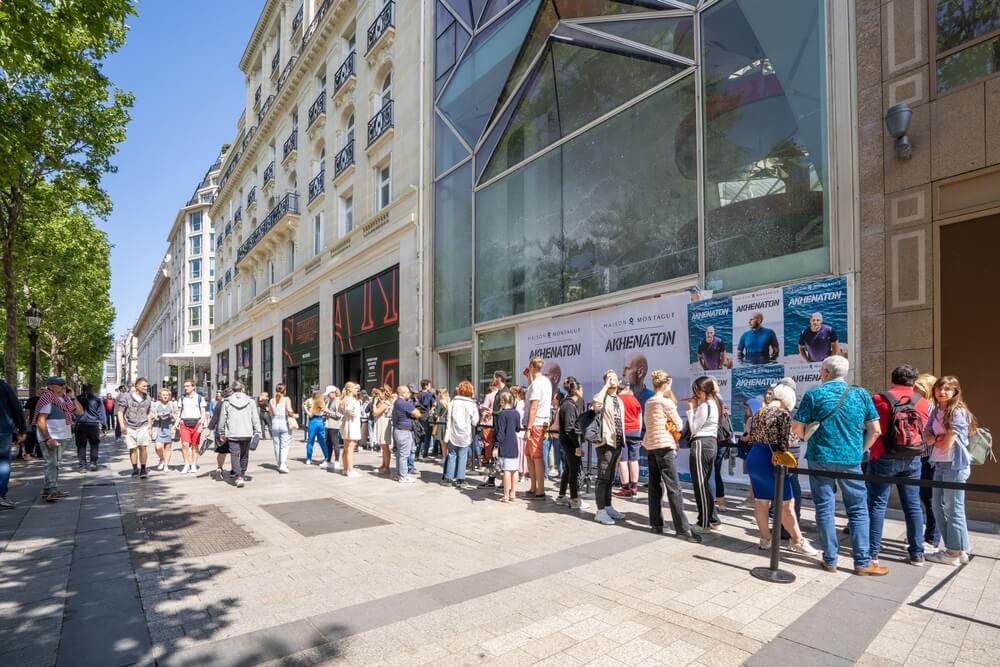Every small business owner knows that the key to increasing sales is connecting with the right consumers. Members of the targeted demographic can prove surprisingly elusive, however, especially if they belong to smaller, niche audiences. So, how can companies find them and create those ever-important relationships? The answer is experiential marketing.
What is experiential marketing?
Regular marketing involves crafting touchpoints for consumers — such as your social media accounts and website — and putting advertisements in outlets your target audience is likely to see. Yet consumers are habituated to encountering such marketing messages and tend to tune them out. Statistics show, for instance, that many people ignore advertisements and simply delete emails from brands.
On the other hand, experiential marketing takes people by surprise. Your company suddenly emerges where no one expected to meet you. In this way, brand activation events tend to be more interesting and exciting from the beginning, which has the potential to disarm people’s natural resistance and provoke their curiosity. Examples of experiential marketing include pop-up shops, which can be in third-party locations, public spaces, or previously vacant storefronts, as well as booths at festivals and conventions.
The basic idea is to give the consumer a real in-person experience that evokes positive emotions. Having enjoyed that experience, they will remember your brand with those same positive associations going forward. This inspires an increased willingness to try your company’s products or services.
Indeed, one study found that 91 percent of consumers who participated in a brand activation became more likely to buy from the sponsoring business. These events can even lay the foundation for an ongoing relationship.
How experiential marketing helps connect with niche groups
One of the biggest advantages of experiential marketing is that it allows you to target customers in niche groups because you can choose non-traditional spaces to relocate your brand. By identifying places your ideal customers hang out, you can go there yourself and literally meet them where they already are.
For instance, let’s say you have a home improvement business. Your clientele is made up of homeowners who want to renovate or build an addition to their residences. Where do these people tend to congregate? One place is hardware stores. Things commonly break or need to be replaced around the house, so going to the hardware store is a normal to-do item for homeowners on the weekend. If you were to partner with a local hardware store and do an event there, therefore, you would have a high likelihood of raising awareness of your enterprise with homeowners in your community.
Another idea would be to set up at a local garden center. Many of the people these locations attract are those who own land and have beautification in mind. In addition, a lot of them are women, who are often the real decision-makers when it comes to home-related purchases.
If your business sells athletic clothing for young women, on the other hand, a hardware store probably isn’t the best place to reach them. You’d have better luck setting up near a gym, yoga studio, or wellness spa.
Do you have a jewelry business? Lots of people bring discretionary cash to live music festivals. Similarly, tourist destinations are full of people who want to create meaningful memories and take souvenirs home.
Make treats for pets? Why not go to a dog park and give away some free samples?
To identify the right locations for your brand activations, the first step is to develop as complete a picture as possible of who your ideal customers are.
Finding the right locations for your brand activations
Once you’ve identified who you’d like to talk to, consider where many of these people go on a regular basis. What do most of them like? What do they tend to be interested in? What errands do their life circumstances necessitate that they run? Write the answers to these questions down in as much detail as you can.
Once you understand who your target audience is and where they can usually be found, it’s time to consider how to bring your brand to those locations as well. It may be as easy as paying for space at a conference or festival. Alternatively, you might partner with another local retailer or other business.
Next, decide how in-depth of a conversation you would like to have with that potential customer. Experiential marketing gives you the ability to shape their experience to maximize the chances of creating the desired emotional connection. Don’t assume a long conversation is necessary. Just creating a short but positive interaction can be enough to plant a seed in the person’s mind. Long after your brand activation, they can remember their conversation with you and come calling.
Experiential marketing: An efficient way to engage niche audiences
Today’s consumers are more weary of advertising and conventional marketing tactics than ever. Conversely, experiential marketing is a powerful way to win them over. Moreover, holding brand activations in the community enables you to get in front of the right people in their natural habitat. This is a highly efficient way to use your resources, which is why small businesses of all kinds should consider implementing an experiential marketing approach.
Ray Sheehan is the Founder of Old City Media, a North American event production and experiential marketing agency. He has a background in strategic planning, marketing, event management, and advertising and has helped the company expand from one city to over twenty states. Before this role, Ray partnered with UpcomingEvents.com, a production company in Philadelphia, and worked for 20th Century FOX. He oversaw all aspects of the business and produced a nationally syndicated television show for FOX. In 2020, he launched the G.I.F.T Program as part of Old City Media. Ray is recognized as a leader in the special events industry and an innovative thinker in the Philadelphia community and beyond.
Popup shop stock image by Dave Z/Shutterstock

